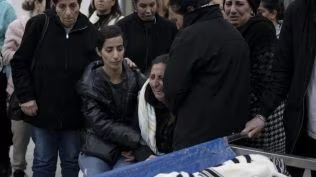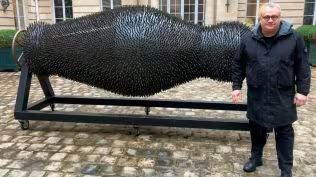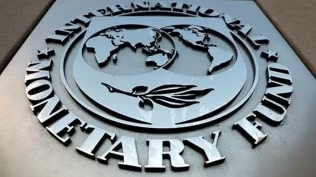The Indian Express in Ukraine: Inside a warzone, two years later
At 12.13 pm on a Wednesday, an air-raid siren splits the air across Ukraine’s Lviv district, close to the Polish border.
A young Ukrainian on his way to work stops briefly, looks up at the sky and remarks, “It’s the Russians conducting their training sessions with their MiG-31s,” before setting off on his way again.

On February 24, Russia’s invasion of Ukraine entered its third year, belying all expectations of a “quick” operation, especially those nursed by Russian President Vladimir Putin. Besides deepening international faultlines, Ukraine, under comedian-turned-President Volodymyr Zelensky, has emerged as the global David to Russia’s Goliath. As the world grapples with the aftershocks — in the form of volatile oil prices, and food and financial linkages getting impacted — Ukraine has seemingly mastered the art of living in a constant state of conflict.
Their homes destroyed and families separated as they live under a constant cloud of attacks, Ukrainians say the sirens do not scare them any more. In fact, most people that The Indian Express spoke to said they respond to air-raid sirens on autopilot now: drop everything and rush to the nearest underground bomb shelter.
Before 2022, for Myroslava Lamerkiv, 32, underground bomb shelters were simply a venue for theme parties she attended in school.
Walking down a cobbled path, the Kyiv resident says, “My school had an underground bomb shelter that was used to host parties on Halloween. Only old buildings constructed before World War 2 had underground shelters but life as we knew it changed forever on February 24, 2022.”
Lamerkiv, a donor relations manager at the Ukraine Crisis Media Center, an NGO that provides information about events in the country, adds, “All new residential buildings, hotels and restaurants now ensure there is a bomb shelter on the premises or at least one in a locality nearby.”
She says she does not react to explosions anymore. “Some days ago, I was sleeping and woke up when I heard an explosion. But I just turned around and went back to sleep,” she says with a shrug.
Serhii Uzlov, 63, who moved from Donetsk to Kyiv a decade ago, agrees with Lamerkiv, “It was scary initially after the invasion began in 2022. Not anymore.”
While locals seem unfazed by air sirens, universities are still particular about following protocol, says Kartikey Tripathi, 27, a sixth-year MBBS student at Lviv National Medical University.
The medical student, who belongs to Gorakhpur in Uttar Pradesh, adds, “After two years of listening to air-raid alerts, for most Ukrainians, it is now a routine affair. They don’t rush to the nearest underground shelter as soon as they hear a siren now. However, we are still required to follow protocol at the university and in the hostel. The lecture stops as soon as the alarm rings. All professors and students rush to the bunker and lectures resume the next day.”
Home ‘new’ home
The settlement centre in Lviv’s Sykhiv district is now 86-year-old Yiliya Vysnevetska’s “home”. She moved here with her daughter in March 2022, after Russian soldiers bombed her house in Donetsk Oblast region’s Lyman village.
Vysnevetska, who uses a cane to get around, claims the Russians destroyed her house because her grandsons are in the military. “They destroyed it with a tank… I worry about my grandsons,” she says, sitting in the immaculate and cheerful common kitchen area of the settlement centre.
“After the incident, I spent all my pension on a van and drove to Lviv. I have no other home now,” says the octogenarian, wearing a bright blue headscarf.
The settlement centre is a slice of home for 1,400 internally displaced persons like Vysnevetska, who fled to western Ukraine after Russian forces attacked the country from the east, near Kharkiv, Donetsk Oblast and Luhansk regions. Local authorities say schools and parks were used to relocate the internally displaced.
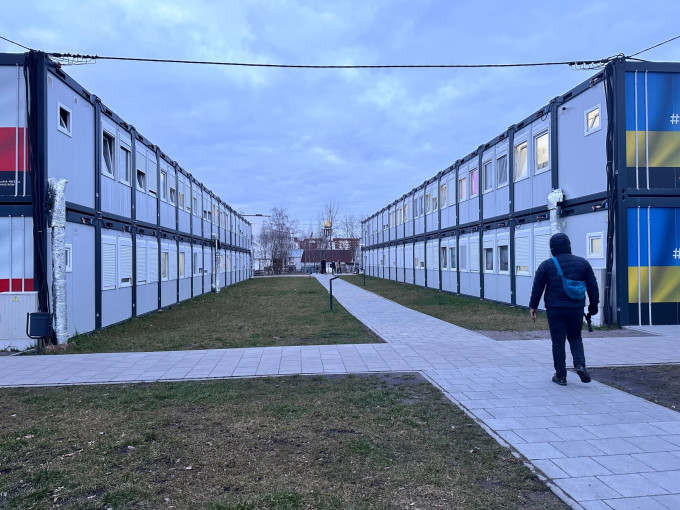 There are over 120 settlement centres in the Lviv region that resemble stacks of grey shipping containers. They have been fixed in a park for the internally displaced. (Express Photo by Sagar Rajput)
There are over 120 settlement centres in the Lviv region that resemble stacks of grey shipping containers. They have been fixed in a park for the internally displaced. (Express Photo by Sagar Rajput)
Governor of Lviv Regional State Administration Maksym Kozytskyi tells The Indian Express, “There are over 120 settlement centres in the Lviv region. Of these, 56 are under the control of the state and the rest are managed by churches.”
Talking about the Lviv settlement centre, administrator Oleh Feday says, “There are eight big modular units. Each unit is a one-plus-one structure (ground plus first floor) and each floor consists of 44 blocks (flats).”
He says the units, which resemble stacks of grey shipping containers, were made in Poland and transported to Lviv, before being fixed in a park for the internally displaced.
“Each floor has a kitchen, a washing area, and bathroom for men and women. One meal a day is usually provided by a church or an NGO, but residents have to cook their own meals the second time,” Feday says.
The common kitchen area is equipped with microwaves, ovens and dishwashers for residents. Benches have been laid out in front of these appliances to double seating capacity at meal time. A grey-white gingham tablecloth covers the table in the centre. Bright yellow and green curtains, potted plants, framed photos and the cheerful sunflower backsplash seek to add a semblance of normalcy to the daily lives of displaced persons.
For Radaguz Yuvhen, 73, too, the settlement centre has been home since January 2024. He says he was forced to leave everything behind after heavy shelling took place near his house in Kharkiv. With all that he held dear stuffed inside one backpack, he recalls rushing to the railway station to board the train evacuating locals.
“I had no clue where I was going. I ended up in Lviv in March 2022 and lived in a hospital there for over a year before shifting to the settlement centre,” he says, adding, “I have no relatives left. I don’t know where they are.”
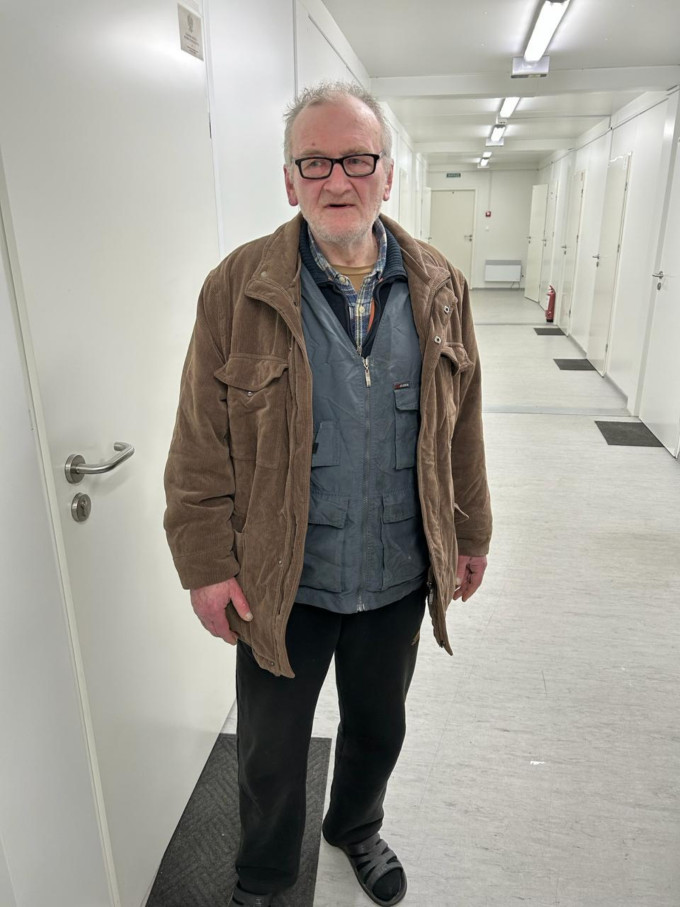 Radaguz Yuvhen moved to the settlement centre in the Lviv region in January 2024. He lost his house in Kharkiv to heavy shelling. (Express Photo by Sagar Rajput)
Radaguz Yuvhen moved to the settlement centre in the Lviv region in January 2024. He lost his house in Kharkiv to heavy shelling. (Express Photo by Sagar Rajput)
With a smile on his face, he points towards the other displaced persons and adds, “These people are my family now.”
While adult occupants go for frequent strolls in the park, the settlement has a small room for children, complete with a colourful mat, a television, toys and bright furniture.
 The settlement centre in the Lviv region has a small room for children, complete with a colourful mat, a television, toys and bright furniture. (Express Photo Sagar Rajput)
The settlement centre in the Lviv region has a small room for children, complete with a colourful mat, a television, toys and bright furniture. (Express Photo Sagar Rajput)
The fight begins young
The conflict has meant something completely different for the youth. Ina Yurchenko, 49, who lost her house to shelling in Donetsk Oblast region and shifted to a settlement centre, says her son joined the military in 2022.
“He was only 20 years old then and had just graduated from college. He never had plans to join the military, but the situation demanded dropping everything to fight for the country,” she says.
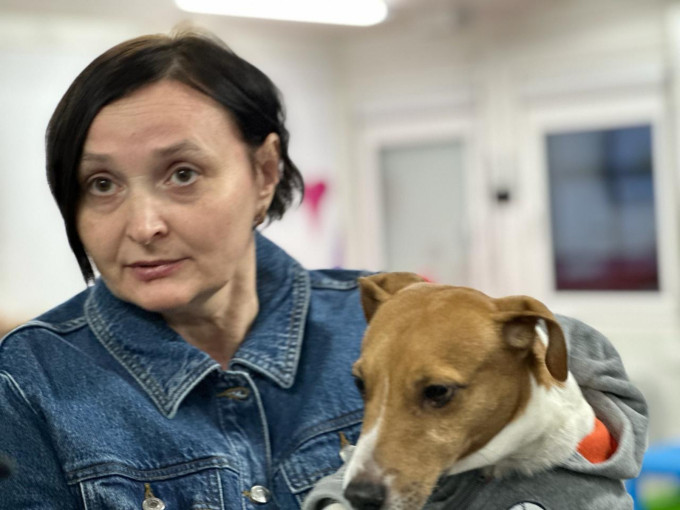 na Yurchenko lost her house to shelling in Donetsk Oblast region and moved to the settlement centre in the Lviv region. (Express Photo by Sagar Rajput)
na Yurchenko lost her house to shelling in Donetsk Oblast region and moved to the settlement centre in the Lviv region. (Express Photo by Sagar Rajput)
Yurchenko says her son was initially sent home by the military. “They said he was too young. However, after he participated in the war in April, he got recruited and was trained by the military. While he fought for Ukraine, my younger son, our two dogs and I escaped to Lviv by bus,” Yurchenko says, adding the dogs sat on their laps the whole time.
With many children, including her 16-year-old son, attending a school in a nearby locality in Lviv, the former teacher has started teaching the young ones at the centre’s playroom.
“I was a teacher in my hometown. These children are the future of Ukraine. When I saw that the children were just passing time, I started teaching them in mid-2022,” she says, waiting for children to arrive for her 6 pm class.
Serhii Uzlov says his son too left his job as an IT engineer to join the military. “Russian forces had started invading Kyiv when my son left everything to fight for the country,” Uzlov says.
Andriy Dashkevych, 34, is one of the many who picked up arms to fight for his country. Till the end of February 2022, Dashkevych worked in a factory where electric cars were made. The war saw him join the army. He says, “I was trained by the military, after which my unit was deployed to Kharkiv and the neighbouring Donetsk region.”
Dashkevych was hit during an artillery strike while crossing a region in eastern Ukraine. Currently undergoing treatment at Superhumans Center in Lviv, he says he ended up losing his leg in the attack.
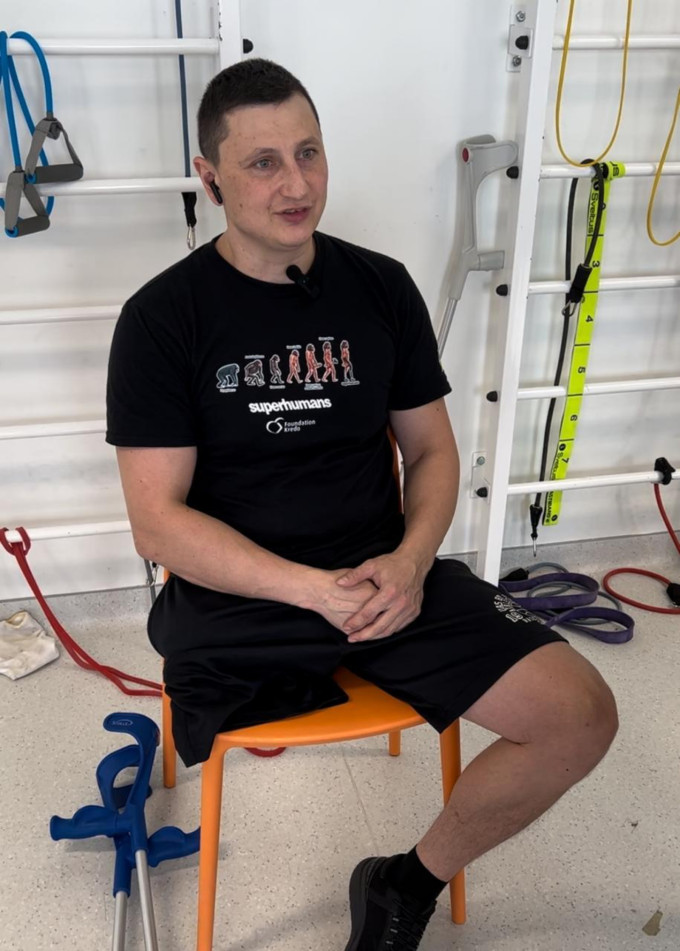 Andriy Dashkevych lost a leg in an attack by the Russian forces. (Express Photo by Sagar Rajput)
Andriy Dashkevych lost a leg in an attack by the Russian forces. (Express Photo by Sagar Rajput)
Like Dashkevych, Ruslana Danilkina, 20, too joined the military in 2022. “My parents and brother were in the military already. A month after the invasion, I started volunteering and was given a post in the back office,” Danilkina says, adding that she soon asked her unit commander for a posting at the frontline.
“They were reluctant at first, but I ended up working as an operator and communication specialist at the frontline for 10 months. I was on a mission in south Ukraine when my car was hit by artillery shells. I lost a leg in the attack,” she says.
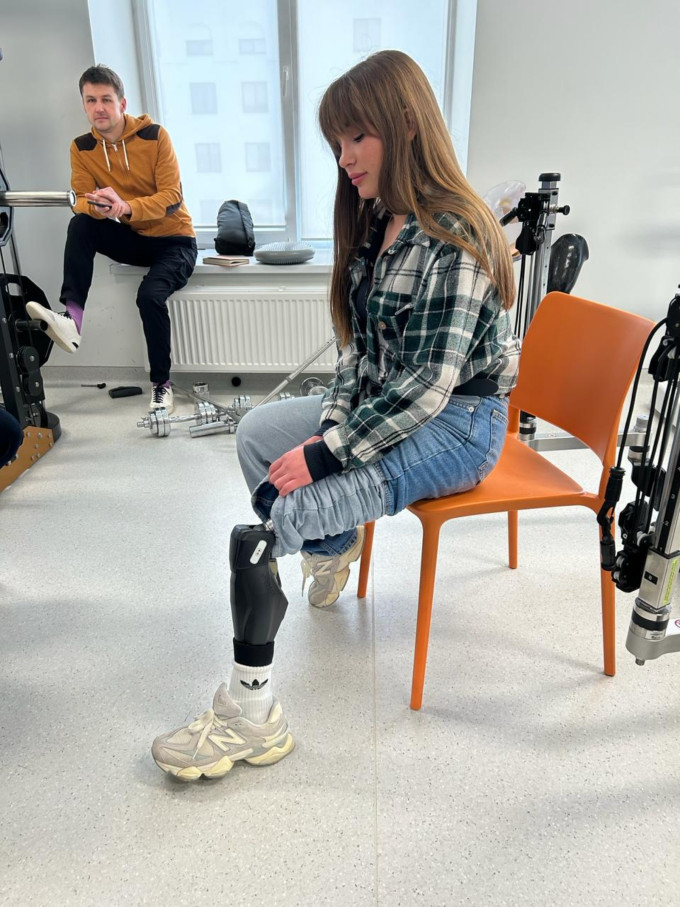 Ruslana Danilkina too lost a leg in an attack by the Russian forces. (Express Photo Sagar Rajput)
Ruslana Danilkina too lost a leg in an attack by the Russian forces. (Express Photo Sagar Rajput)
She ended up spending two months in hospital. “I needed a prosthetic leg, which coincided with the opening of the Superhumans Center. After surgery for the prosthetic limb, I went back to Odessa to continue my treatment and rehabilitation,” says Danilkina.
However, she refused to let her injury slow her down. When she is not working with Superhumans or helping her patients as a psychologist, she is modelling for clothing brands in Ukraine. In fact, Danilkina has 94.9k followers on Instagram.
She says, “I started modelling to send a message to society — that we have to accept ourselves and should be perceived just the way we are.”
The reporter was in Ukraine on the invitation of the Ukraine Crisis Media Center.
Disclaimer: The copyright of this article belongs to the original author. Reposting this article is solely for the purpose of information dissemination and does not constitute any investment advice. If there is any infringement, please contact us immediately. We will make corrections or deletions as necessary. Thank you.


